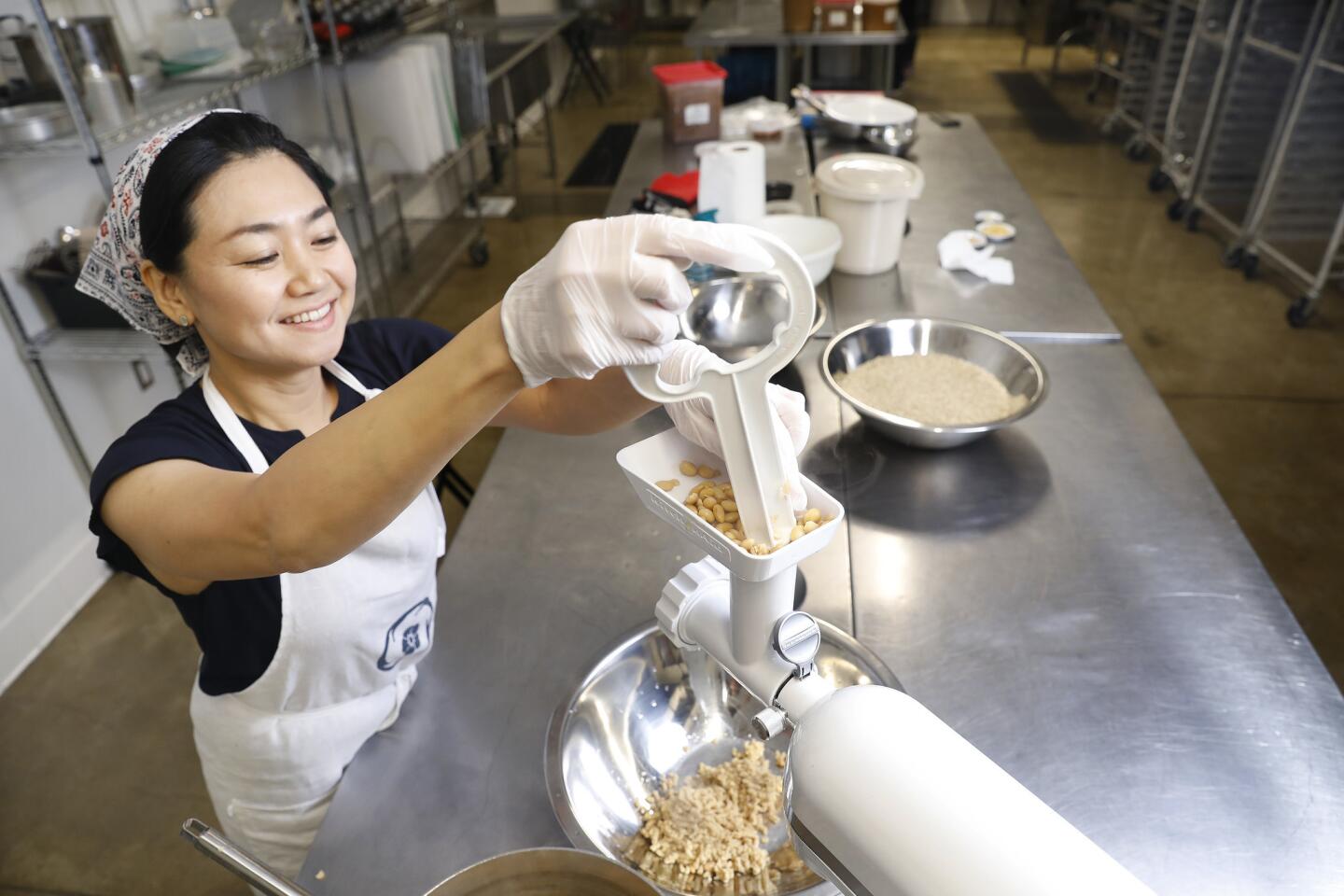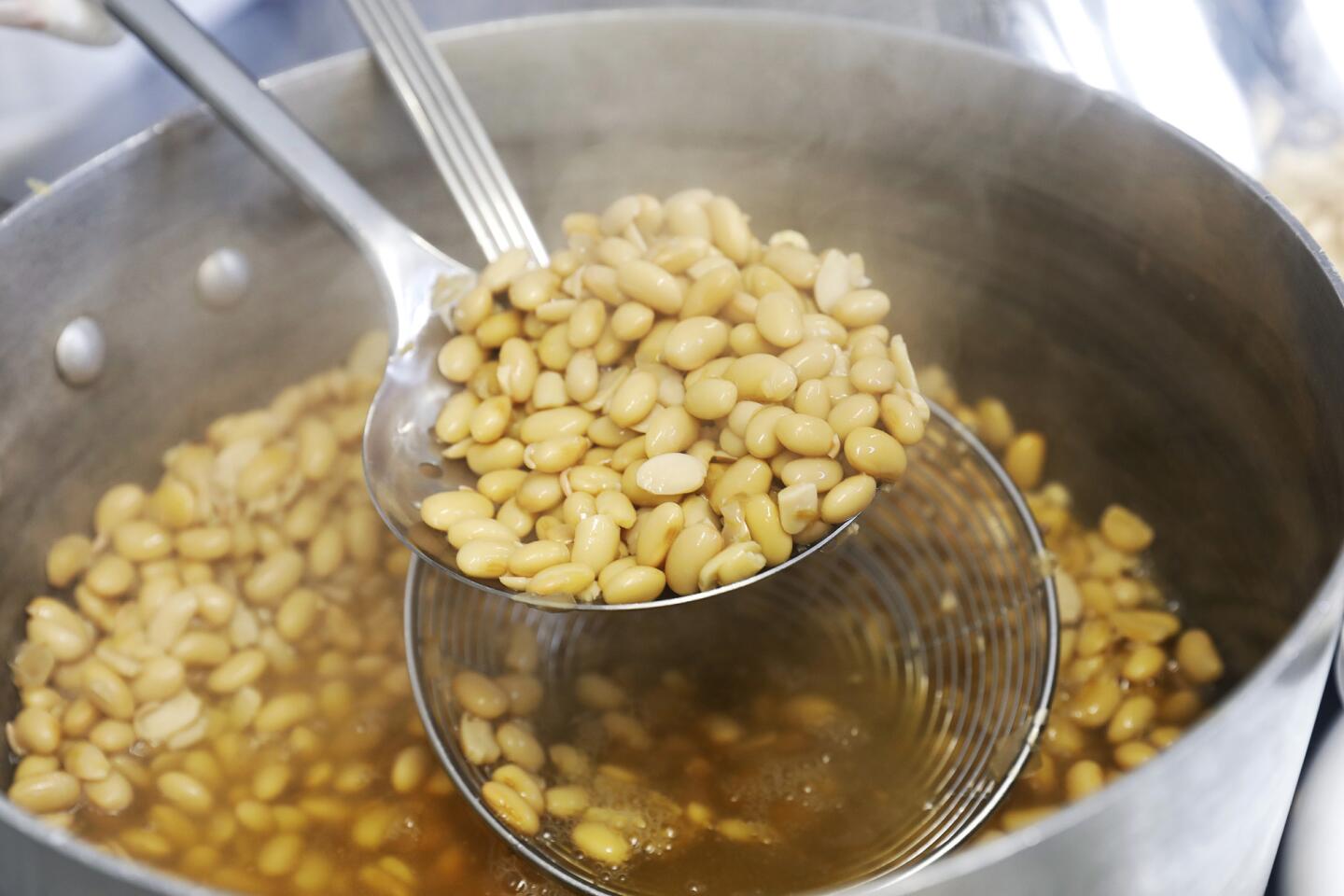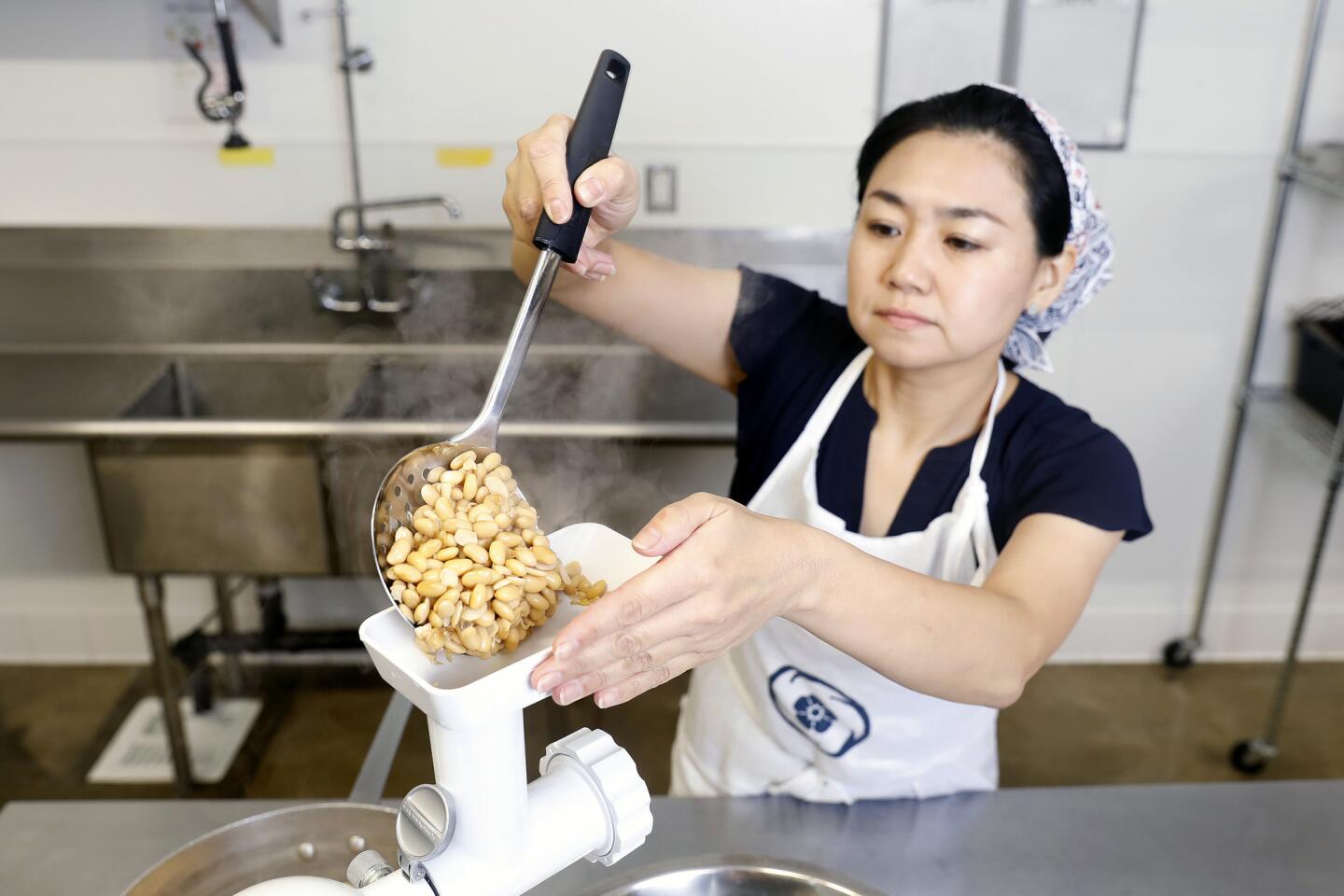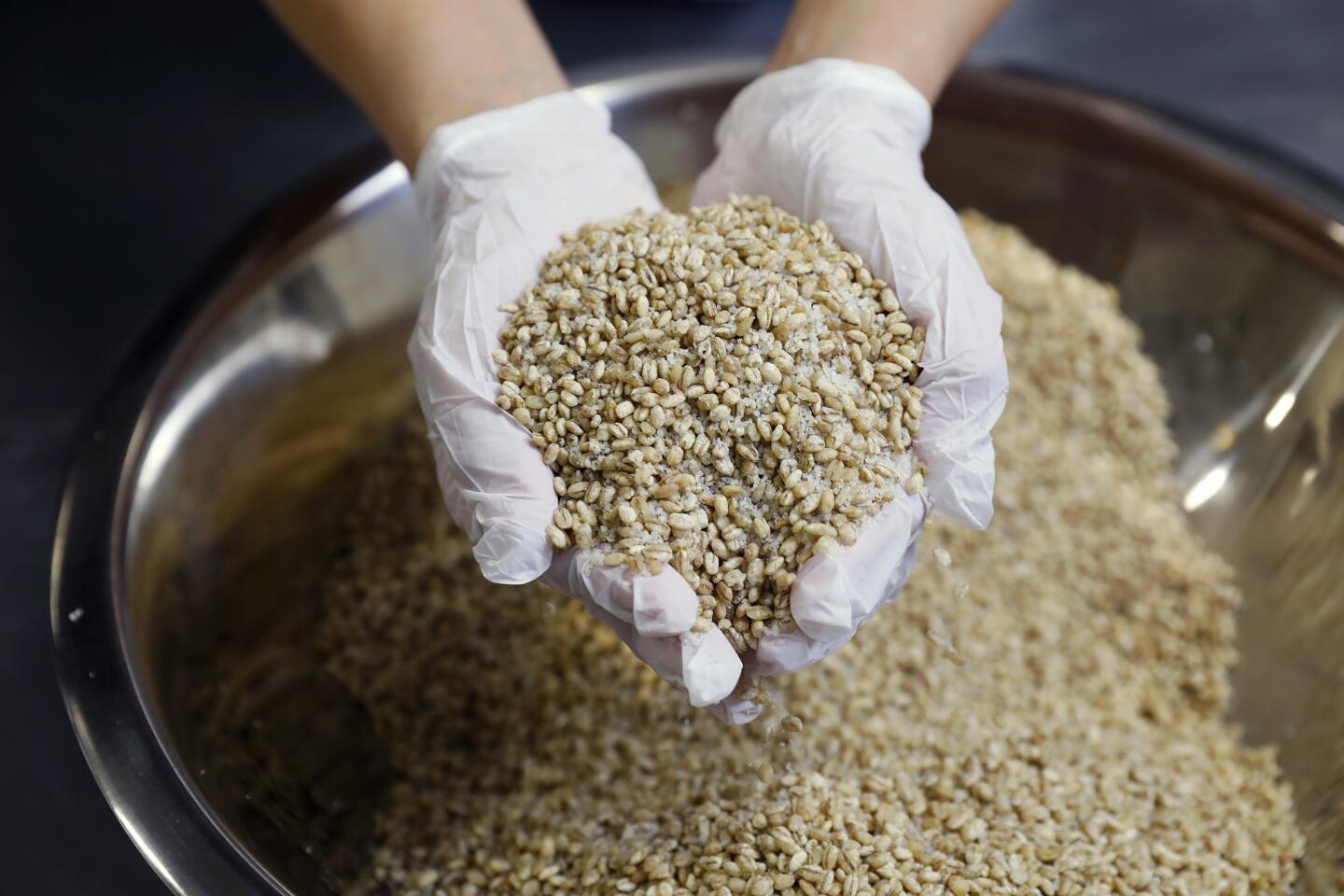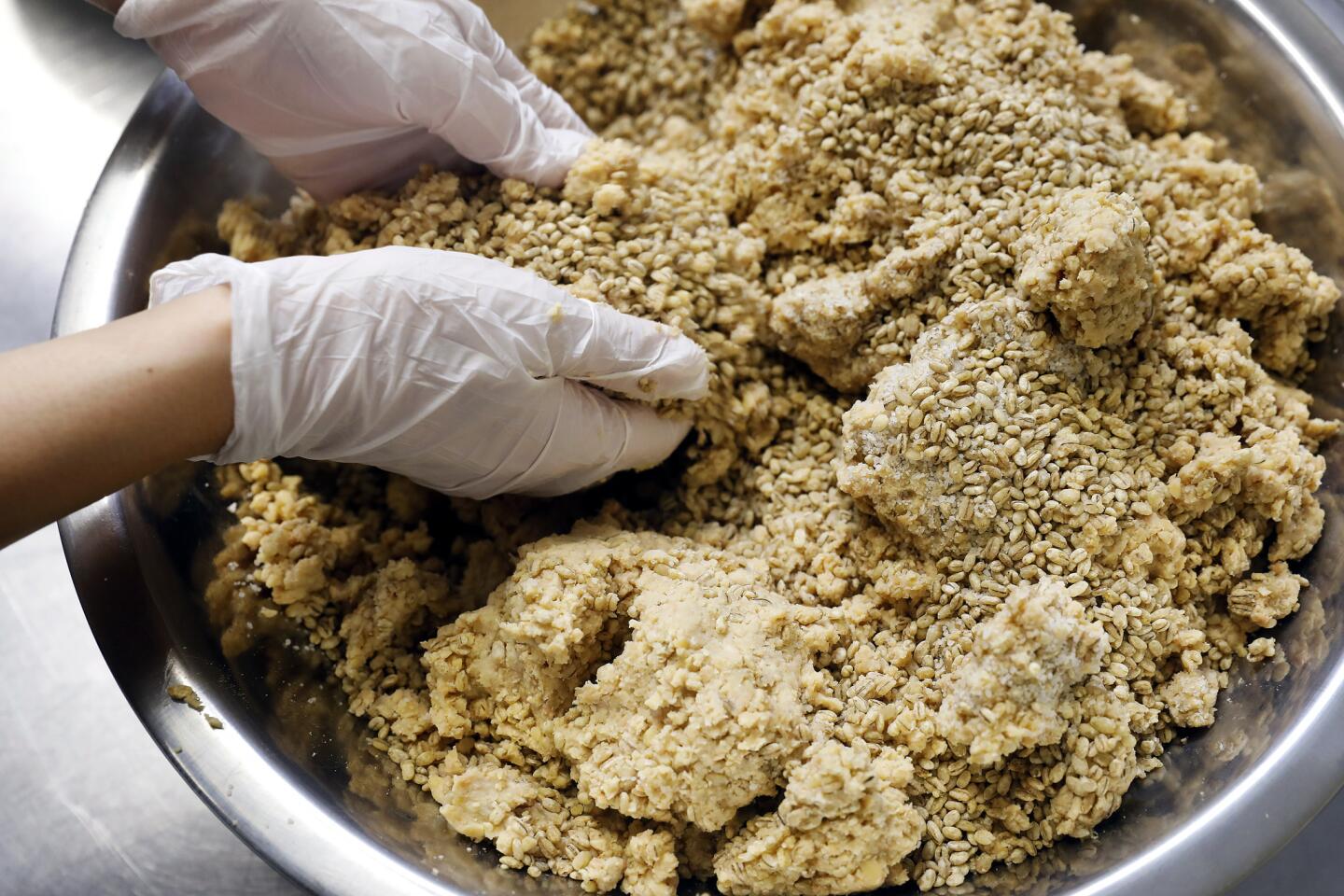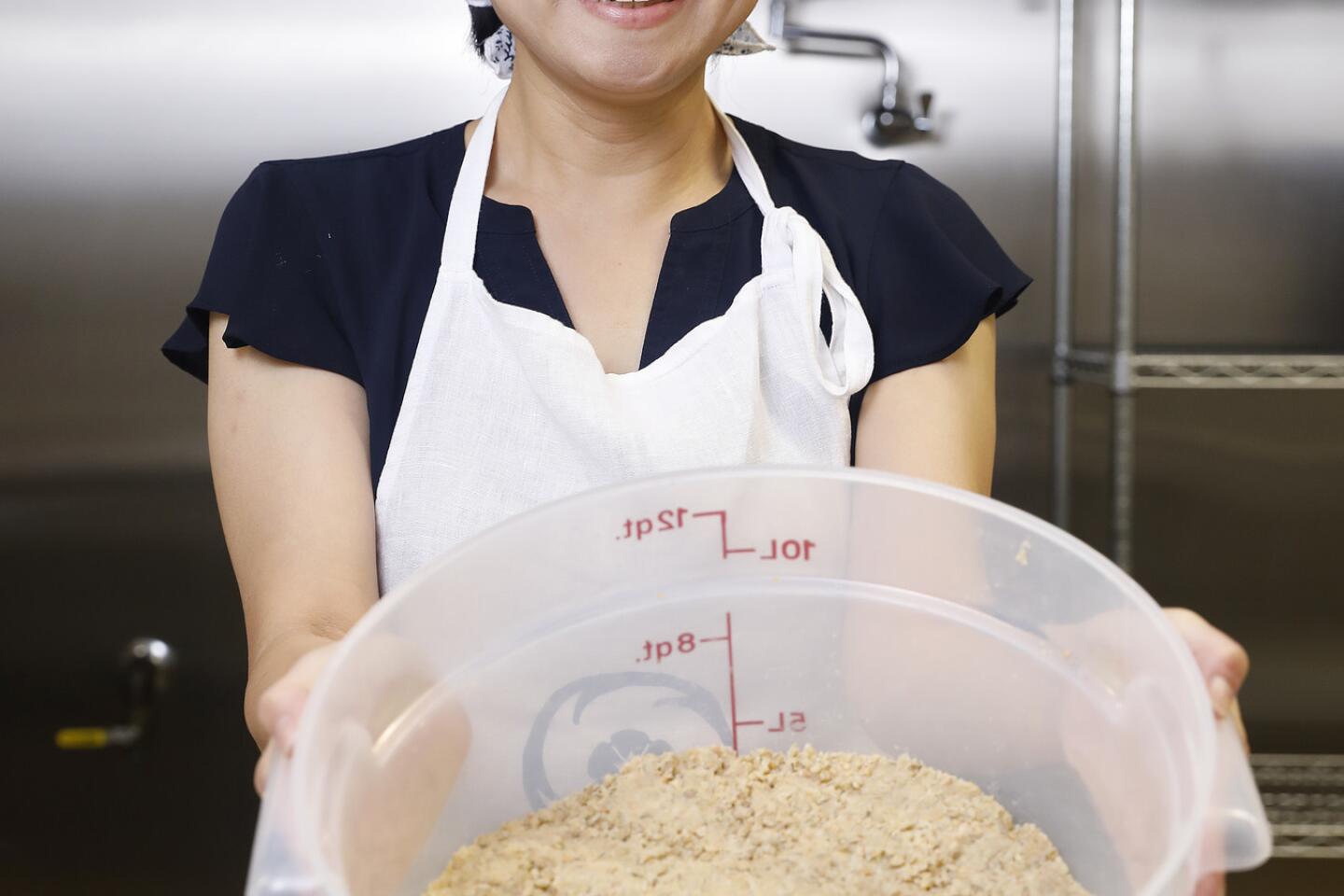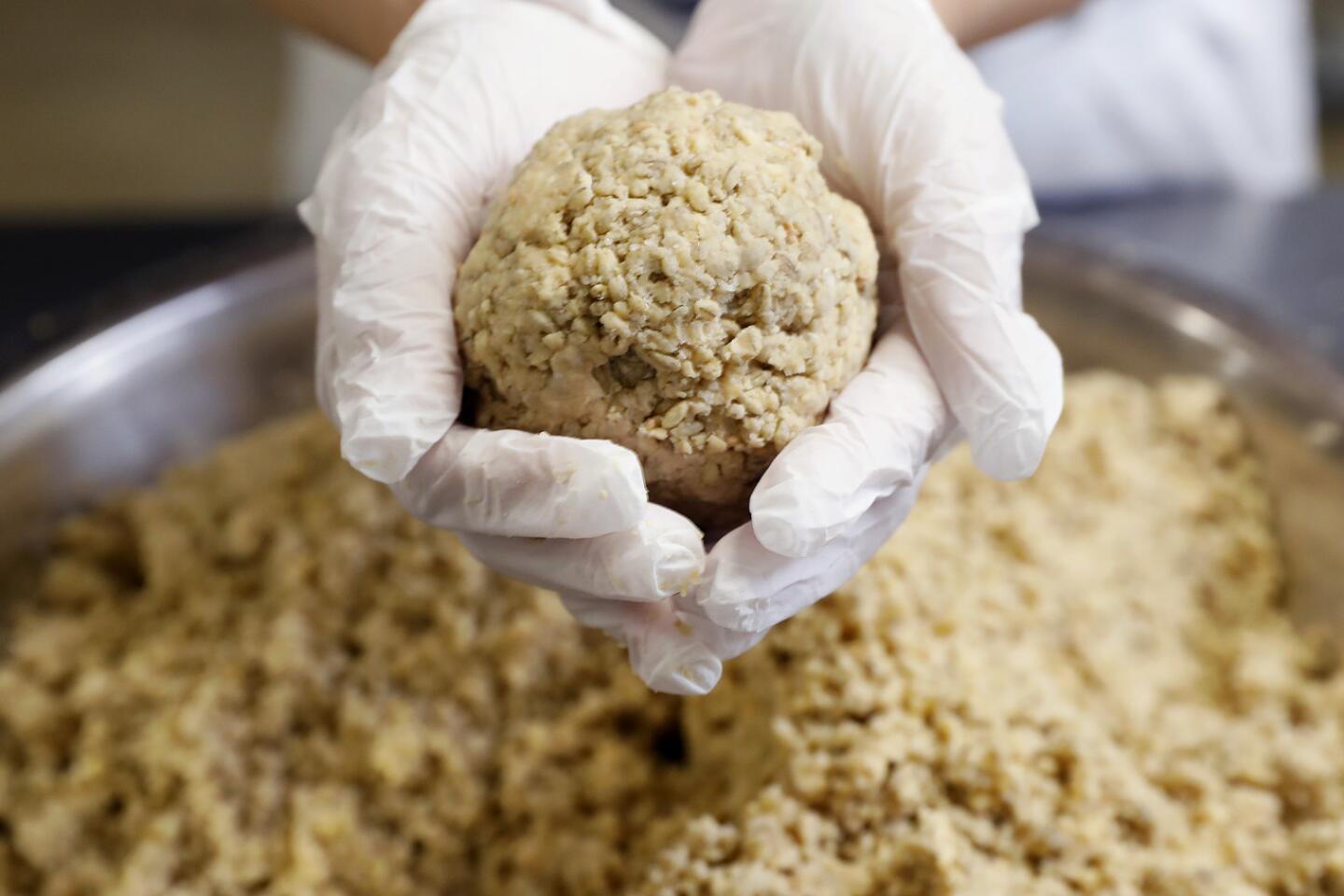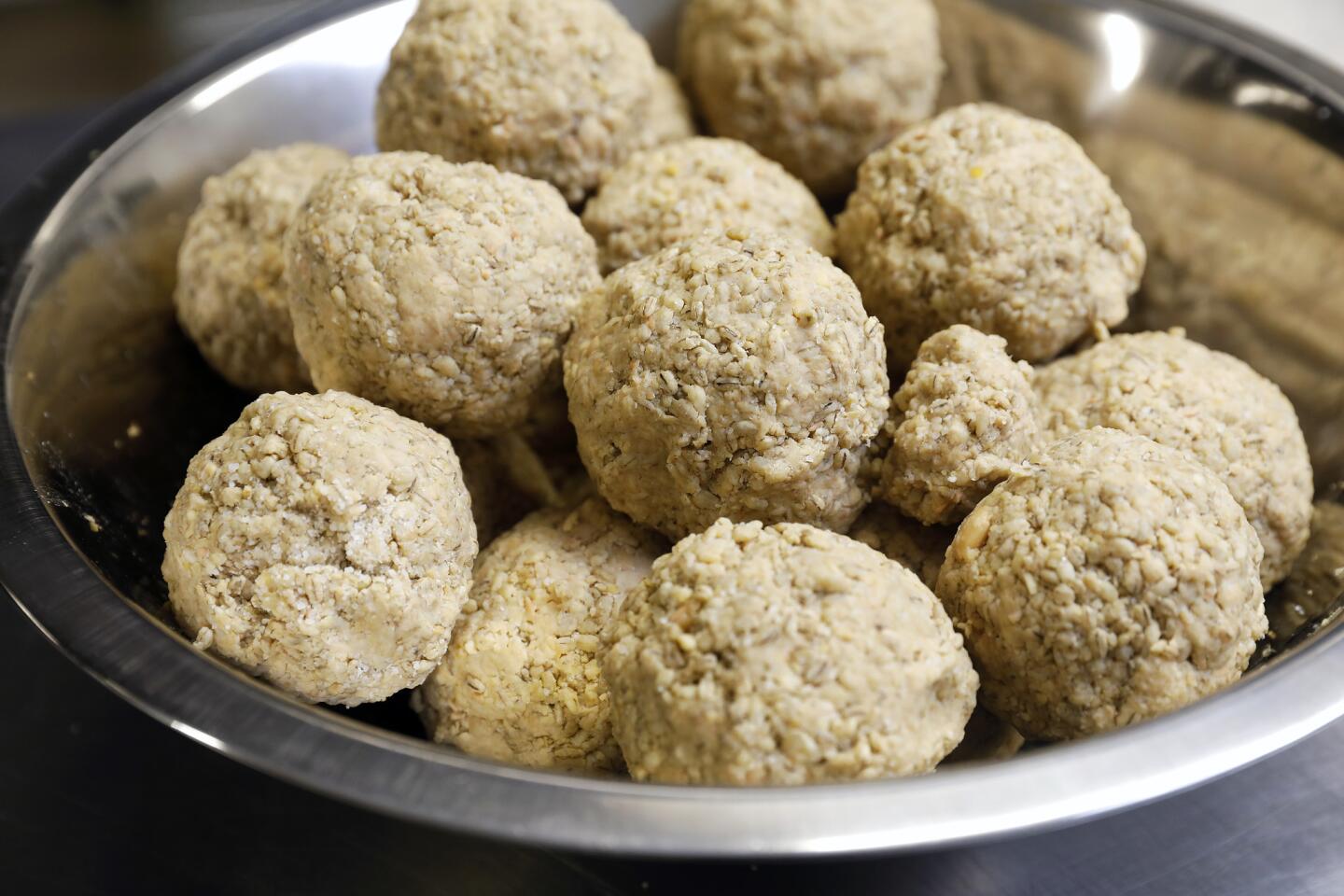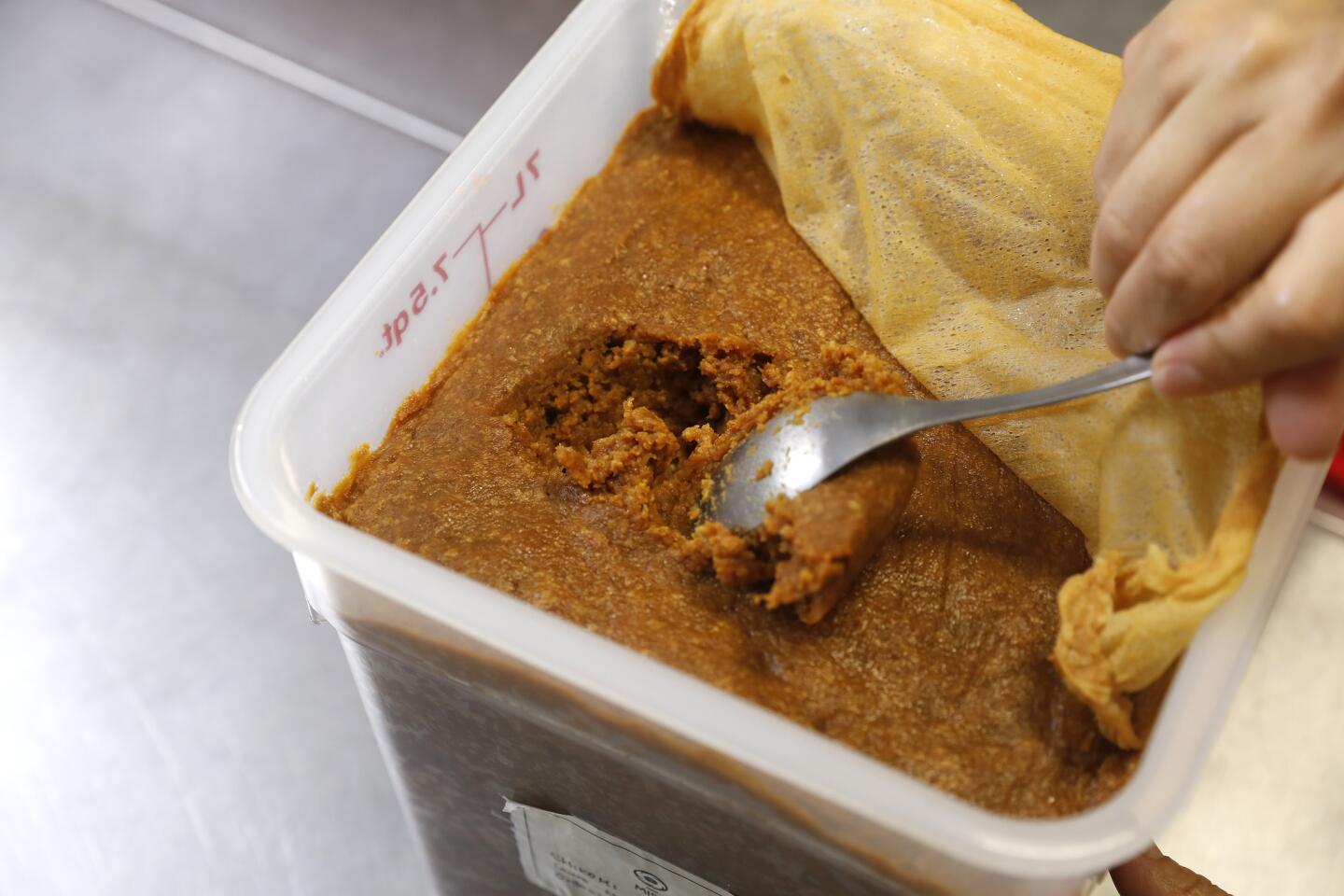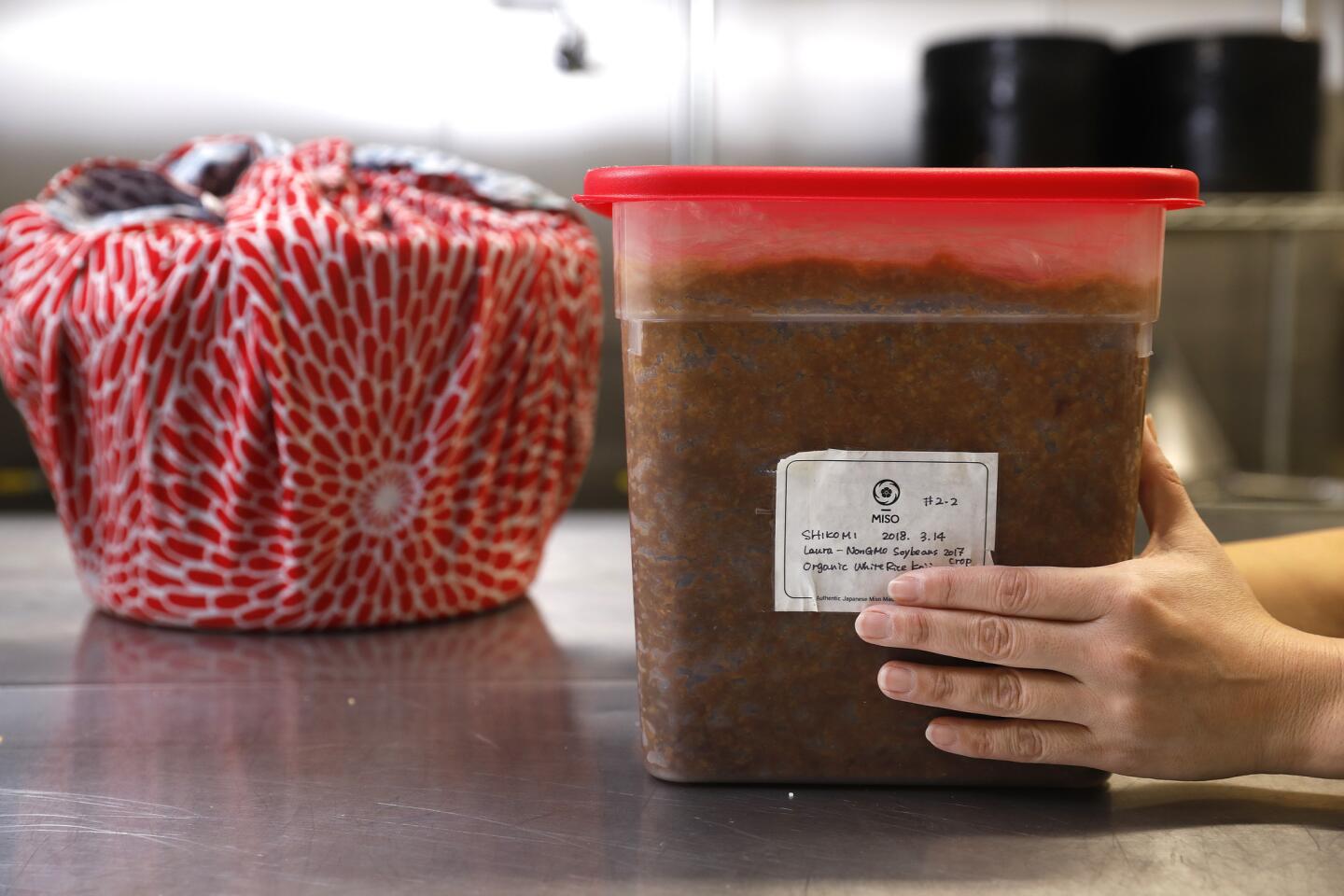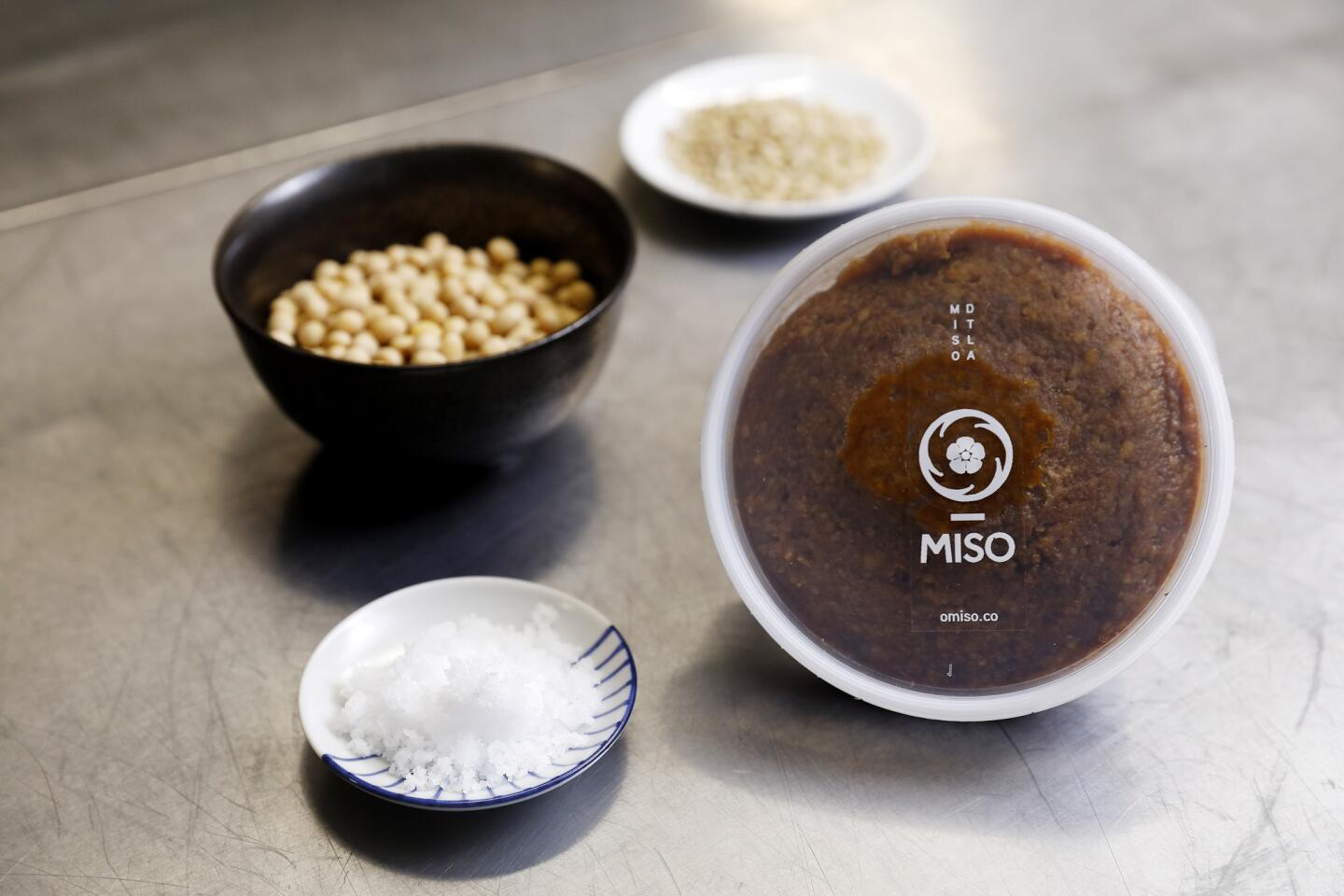The story behind that amazing miso vendor at the Hollywood Farmers Market
Standing on a step stool because the counter’s just too high for her, Ai Fujimoto is elbow deep into mixing a bucket of mashed soybeans with grains of rice that look as if they are covered in a layer of fuzzy snow. She is starting another batch of handmade miso, her 11th since February, bringing the total to more than 350 pounds of soybean paste she has fermented this year.
Miso was, at first, a hobby for Fujimoto, a 39-year-old technical translator at a Japanese manufacturing company in Torrance. It quickly grew into an obsession. Then, the friends she gifted her miso to encouraged her to open a business. So early this year, she rented space at downtown’s Crafted Kitchen, a shared-use commercial kitchen, and started Omiso Co.
In May, she set up a stand at the Hollywood Farmers Market, but because most of her miso was still fermenting, she began selling limited amounts of miso balls — miso mixed with dashi and other ingredients, rolled into a ball so that you can add hot water and have a sort of instant soup.
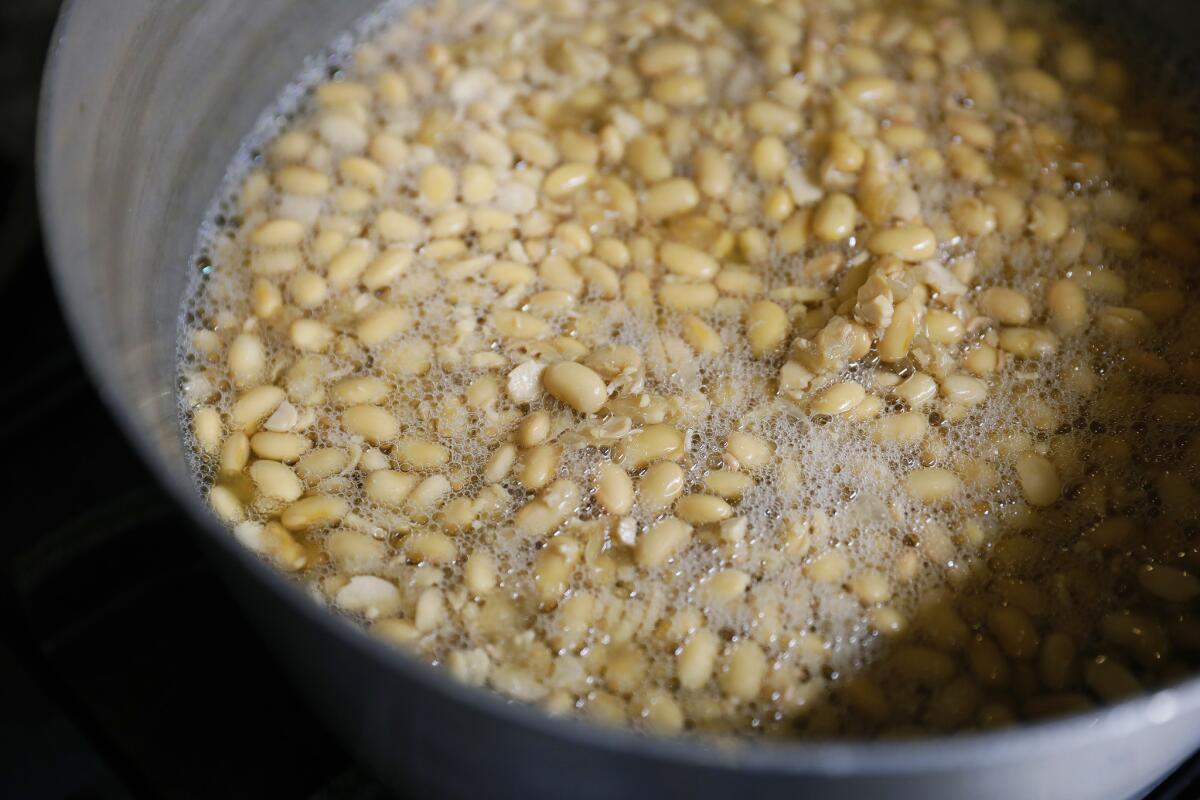
Now, her first awase or country-style miso also will be available. “Miso should have character,” Fujimoto says. “It used to be that each Japanese family had their own miso recipe, and every family would say theirs is the best.”
Most miso is industrially produced these days, and, in response to that, Fujimoto is trying to recapture the individuality of miso, which is made by mixing soybeans, salt and rice koji — grains inoculated with the beneficial mold Aspergillus oryzae, also used for brewing sake and soy sauce. The paste ferments for a few months (for light miso) or up to more than a year (for dark miso). “You never know quite how each batch will turn out until the fermentation is in process,” she says. “That’s what I love about it.”
It used to be that each Japanese family had their own miso recipe, and every family would say theirs is the best.
— Ai Fujimoto
The style of miso she grew up with in and around Kyoto is lighter and a little sweeter. So she has been experimenting with an amakuchi miso, with relatively more koji and less salt. Her awase miso takes nearly a year to ferment. It’s a rich auburn color, chunky-textured, savory, salty, slightly sweet. It has a fresh soybean flavor and mellow funkiness unlike most of the commercial miso found in grocery stores.
Her interest in koji-based fermentation started on a field trip to a sake brewery as a 6-year-old. “I don’t know how appropriate that was for small children. But I remember seeing the koji, presented in some kind of Tupperware. It was this fluffy, weird-shaped rice with a fermented smell. We were kind of disgusted and also fascinated.”
But years later, living in L.A., she says she couldn’t find the right water to make sake with, and the temperature here isn’t ideal for its fermentation and aging. So she experimented with brewing soy sauce from scratch. “I got [koji] spores from Japan, sprinkled them over cooked soybeans kept at a certain temperature in an insulated cardboard box with a thermometer and a hot water bottle.” After a few days of that, she added water and salt and “just had to wait” — for a year and half for it to finish fermenting, before it was ready to use.
In the meantime, she started watching Japanese YouTube videos on how to make miso, especially those of Koichiro Kawasaki, whose family runs Marukawa Miso, a 103-year-old producer in Fukui. She visited Marukawa two years ago during a trip back to Japan, and “that was the beginning.”
Her miso starts with organic soybeans from Nebraska. The inoculated organic rice is from Marukawa Miso, which collects its own spores and oversees propagation in its koji muro, a dedicated temperature- and humidity-controlled room. The salt is from Japan too. “Two people can have the same materials, same amount of ingredients, same fermentation time, but because of their shikomi — the way each mashes and mixes the soybeans — their miso will be different.”
“Right now, we can have any food anywhere anytime instantly,” Fujimoto says. “People don’t even realize miso is a fermented food. But the months-long [miso] process is what interests me — the effort, the experimentation and the surprise.”
Her inaugural batches of completed miso are for sale in 8-ounce packages ($15 to $18) at the Omiso stand at the Hollywood Farmers Market every other Sunday. She has labeled each with its batch date and a name — such as Hajimemashite, which means “nice to meet you.”
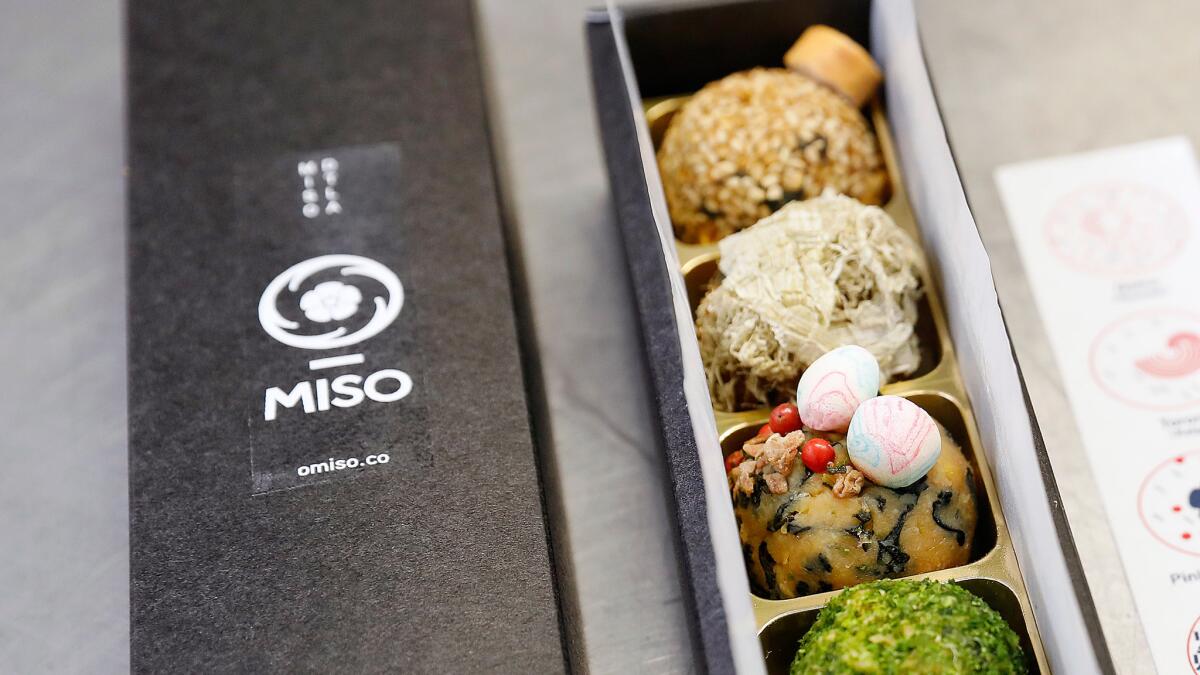
More to Read
Eat your way across L.A.
Get our weekly Tasting Notes newsletter for reviews, news and more.
You may occasionally receive promotional content from the Los Angeles Times.
